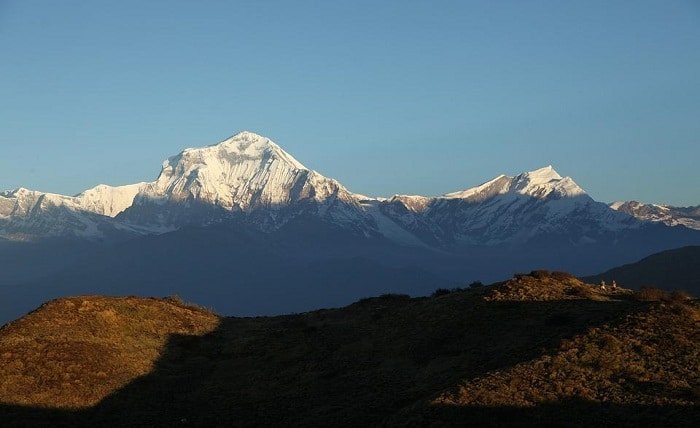News
Best Times to Climb Dhaulagiri I

Dhaulagiri I, the seventh-highest peak in the world, is a thrilling destination for trekkers and mountaineers. Located in Nepal’s Himalayas, it offers stunning views, challenging routes, and serene landscapes. The best time to visit is from September to November. Experience adventure with breathtaking scenery in every step! Mountain like
- Pre-Monsoon (Spring) Season
- Months: April, May
- Advantages:
- Weather: Generally the most stable weather conditions with less snowfall and clearer skies.
- Temperature: Warmer temperatures at lower altitudes but still cold at high elevations.
- Visibility: Good visibility and less chance of heavy snowstorms.
- Climbing Conditions: Optimal conditions for climbing and establishing higher camps.
- Considerations:
- Crowds: This is the peak season for climbing many Himalayan peaks, so you might encounter other climbers.
- Preparation: Requires thorough preparation due to the popularity of this season.
- Post-Monsoon (Autumn) Season
- Months: September, October
- Advantages:
- Weather: Improved weather conditions following the monsoon rains, though conditions can still be somewhat variable.
- Temperature: Gradually getting colder but less extreme than in winter.
- Climbing Conditions: Possible good conditions for climbing, though more unpredictable compared to pre-monsoon.
- Considerations:
- Weather: There can still be occasional storms or snowfall.
- Crowds: Fewer climbers compared to the spring season, which might offer a more serene experience.
Other Considerations
Winter Season (December-February)
- Weather: Extreme cold with high avalanche risk and severe weather conditions.
- Climbing Conditions: Generally not recommended for climbing due to harsh conditions and dangerous weather.
Summer Season (June-August)
- Weather: This period is the monsoon season in Nepal, characterized by heavy rains, high avalanche risk, and frequent storms.
- Climbing Conditions: Poor conditions for climbing due to heavy snowfall and increased risk of avalanches.
Detailed Comparison
| Season | Best Months | Weather Conditions | Climbing Conditions | Pros & Cons |
|---|---|---|---|---|
| Pre-Monsoon | April, May | Most stable, clear skies | Optimal for climbing | Pros: Best weather, good visibility. Cons: Crowded, higher costs. |
| Post-Monsoon | September, October | Improving, but still variable | Good conditions, fewer climbers | Pros: Fewer climbers, less expensive. Cons: Weather can be unpredictable. |
| Winter | December-February | Extremely cold, high avalanche risk | Dangerous conditions | Pros: Few climbers, low costs. Cons: Extremely cold, high risk of storms. |
| Summer | June-August | Heavy rains, high avalanche risk | Not suitable for climbing | Pros: Low costs. Cons: Poor conditions, high risks. |
Best Time Summary
- April and May: The best months for a successful and safe Dhaulagiri I climb, offering the most stable weather conditions and optimal climbing conditions.
- September and October: A good alternative to spring with generally acceptable weather, though slightly more unpredictable.
Remember for every mountain listed below there are best time and season to climb
- Everest climb or everest expedition
- Baruntse expedition
- Lobuche peak climb
- Ama Dablam expedition
- Aconcagua expedition
- Manaslu expedition
- Island peak climb
- Mera Peak climb
- Lhotse expedition





